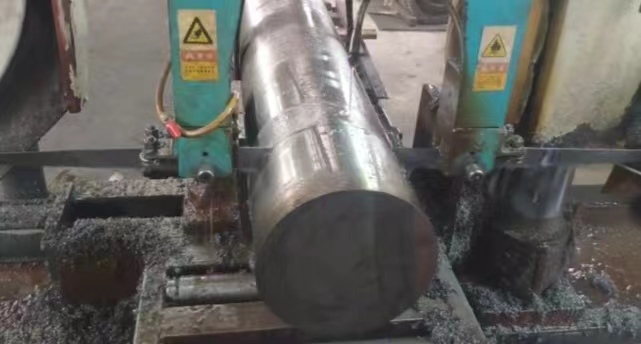How to cut titanium bars for DIY projects

Using titanium rods in DIY projects requires consideration of various factors, including appropriate tools, cutting and processing methods, and safety measures. Here is a detailed explanation:
Appropriate Tools
Band Saw:
Use carbide-tipped blades or high-speed steel blades specifically designed for cutting titanium.
Choose a saw with a cooling system to prevent overheating.
Angle Grinder:
Equip with high-performance aluminum oxide or diamond cut-off wheels.
Ensure the grinder has enough power to handle the hardness of titanium.
Wire EDM (Electrical Discharge Machining):
Suitable for high-precision and complex shapes.
Requires specialized equipment and technical support.
Plasma Cutter:
A high-efficiency option for cutting thicker titanium rods.
Needs a stable power supply and good ventilation.
Cutting and Processing Methods
Cooling:
Use plenty of coolant (such as water or specialized cutting fluid) during cutting to reduce heat buildup.
The coolant can be applied through spraying or immersion.
Low-Speed Cutting:
Maintain low-speed cutting to reduce friction and heat.
Adjust the tool's speed and feed rate for optimal results.
Light Pressure:
Apply light pressure during cutting or grinding to avoid damaging the tool or deforming the material.
Use a sturdy fixture to secure the titanium rod, ensuring stability and precision.
Safety Protection Measures
Personal Protective Equipment (PPE):
Safety Glasses: Protect your eyes from flying sparks and metal debris.
Gloves: Use heat-resistant and cut-resistant gloves to protect your hands from high temperatures and sharp edges.
Protective Clothing: Wear fire-resistant and protective clothing to prevent injuries from hot metal debris.
Ear Protection: Use earmuffs or earplugs to protect your hearing from high noise levels.
Work Environment:
Good Ventilation: Ensure proper ventilation to disperse smoke and metal dust generated during cutting and grinding.
Fire Safety: Have a fire extinguisher ready and ensure no flammable materials are in the work area.
Stable Workbench: Ensure the workbench is stable and provides enough space for operation.
Operating Procedures:
Tool Inspection: Check tools for damage or wear before use.
Proper Operation: Follow the tool's operating instructions carefully to avoid accidents.
Focus: Stay focused during cutting and processing to avoid distractions and fatigue-related errors.
Additional Recommendations
Training and Practice: If you lack experience with cutting titanium rods, consider taking relevant training or starting with simpler projects.
Use Appropriate Lubricants: When drilling or tapping, use lubricants suitable for titanium to reduce friction and heat.
Tool Maintenance: Regularly inspect and maintain tools to ensure they operate in optimal condition.
In summary, using titanium rods for DIY projects requires preparing the right tools, employing proper methods, and strictly adhering to safety measures to ensure safe and effective operation